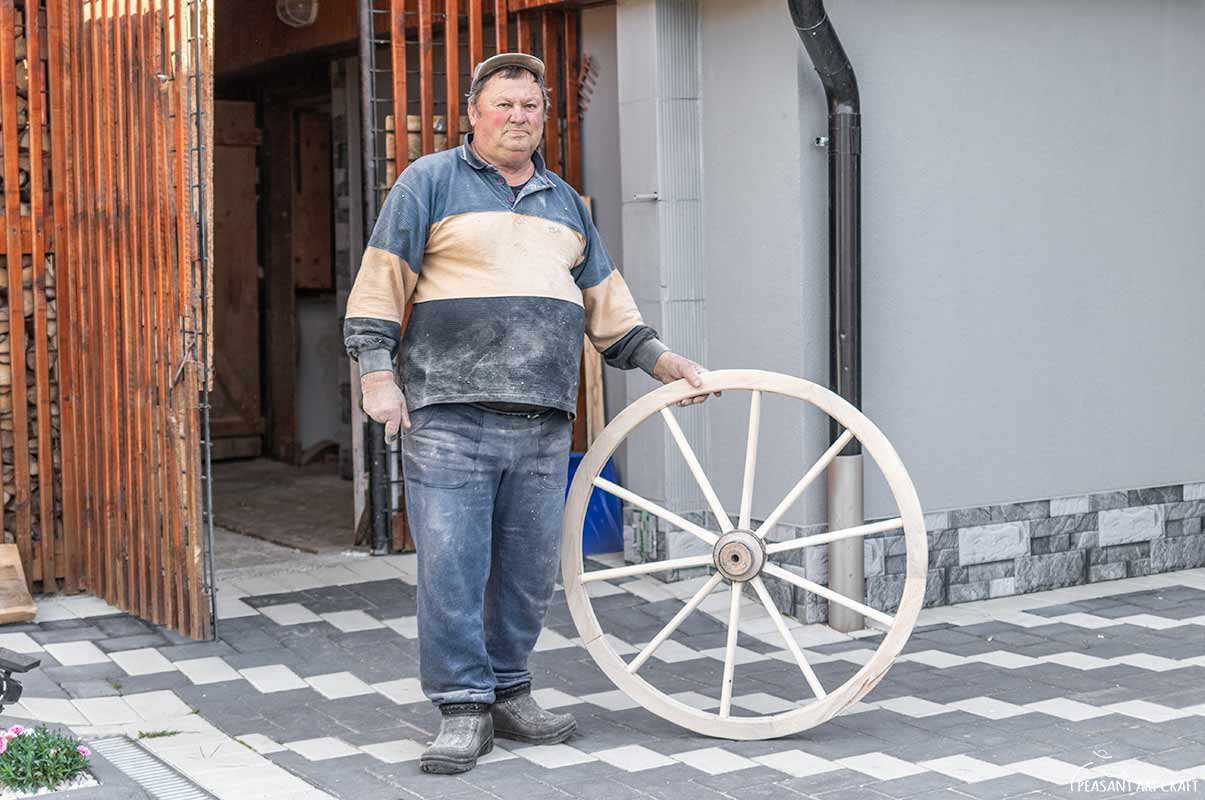
You may not believe it now, when we are faster than ever, more comfortable, and can travel longer distances than barely a hundred years ago, a handful of specialized craftsmen would spend days on end measuring, shaping, drilling, and hammering to set the wheels in motion. “In wartime, my grandfather had built canon wheels. A canon wooden wheel required two men to get the job done,” recalls master wheelwright Popescu Vasile Chiriacuț.


Located in Straja, Suceava County, a picturesque village surrounded by mountains, the Chiriacuț family has handed down the ancient art of wheelwrighting from father to son for generations. Mr. Popescu preserves a rich cultural and artistic heritage passed down from family members to the next generation, a long process of teaching and learning between father and son.
“My father had nine siblings. It was he who followed the family tradition and became a wheelwright. He made cartwheels. As I grew up he had taught me the trade. My interest in building wheels began in my early childhood. My father and grandfather were a big inspiration for me growing up because they were very skillful and their tools of the trade fascinated me”, he remembers.
In past generations, wheelwrighting was alive and well in the workforce, and this family had seen it all, from massive canon wheels in times of war, to big wheels that were used to lift water from church wells.


“My father loved to do things the right way. When I was twelve, my father taught me how to shape spokes and felloes, but he never let me assemble a wheel myself, because he would have had to work twice as much if I messed things up. It was only after his death that I got to make a wooden wheel all by myself.”
Mr. Popescu had built a household and raised a family with the work of his hands, and lost three fingers in the process.
We entered the front yard, past two beautiful two-floor houses, and out in the backyard through an open barn which served as a passage. In the backyard, what a great view met my eyes. In the distance, mountain ranges between Romania and Ukraine, the backyard neatly arranged with lawn and a well-organized garden, a flock of chickens clucking contentedly and pecking at the ground. In his workshop to the right, he was shaping spokes with a drawknife, wood shavings curling at his feet.

There were twelve spokes to be done, each spoke a little oblique at a side, and a felloe for every two spokes. Each spoke was inserted into the locally turned wheel hub which was previously chiseled to fit the spokes into it at the right angle. With a compass and a handsaw, he carved through a hardwood board four equally curved felloes to be fitted onto the outer ends of the spokes.


Although I made it sound so easy, it was far from that. I was astonished by the great amount of work that went into making a wooden wheel, and the great attention to every detail, that makes this wheelwright a true master at work.
For instance, once the wheel was assembled and looked like it was ready, he began to saw between the felloe joints and around the end of each spoke to better fit into the felloes. Once again, he took the felloes out to make cuts and fastened them firmly with metal wedges between the joints.

A large portion of his work was done by hand with a range of tools inherited from his forefathers, that were so old and simple I could scarcely believe my eyes when he pulled them out of the cabinet: a beam compass that was more like a stick with a pivot pin at one end and a marking device at the other, draw knives, and drills to bore holes of different sizes, a rickety wheelwright’s chair that held in place the nave so he could chisel with ease.


“These are very old tools from the time of the Austro-Hungarian Empire”, he said as he showed us the old crown stamp embossed on their surface, then carefully putting them away in their place.
What might have seemed like a man building a common object was a glimpse into deeply focused, masterful craftsmanship that would last days and require skills and knowledge acquired over centuries.
For instance, choosing the right wood is one crucial aspect when embarking on a wooden wheel making project.
“The best time to cut timber is from fall to spring, as there is less sap in the wood. A couple of years it is stored to dry, green wood is not suitable for the job. This wood must be five years of age.”
Each part was made out of a different type of wood, acacia for the spokes, ash for the
nave, and beech for the fellows.


As I watched Mr. Popescu doing his trade, I realized how blessed we were to meet a highly skilled man with such a rare vocation, an eye for detail, and real accuracy based on experience and common sense.
Similar articles

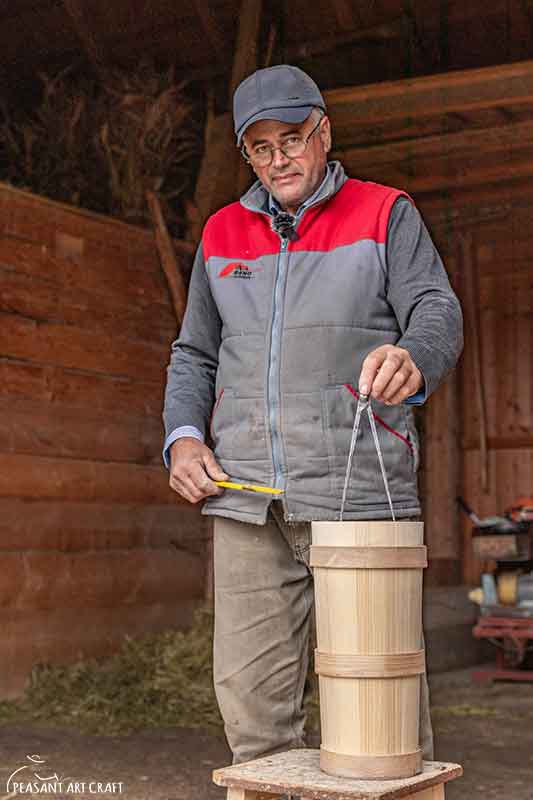
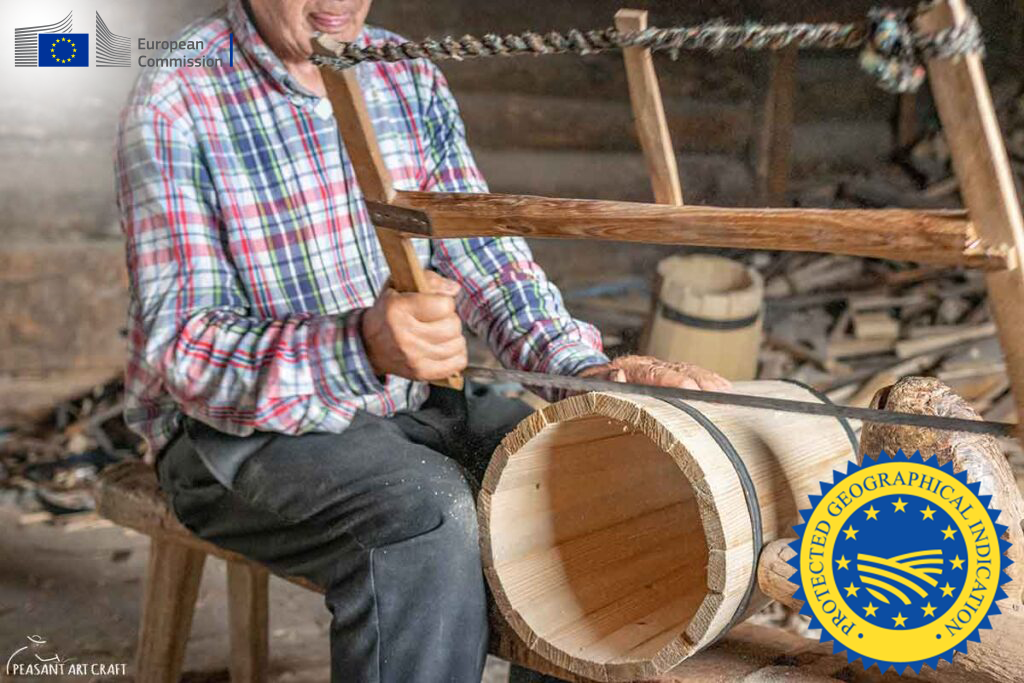



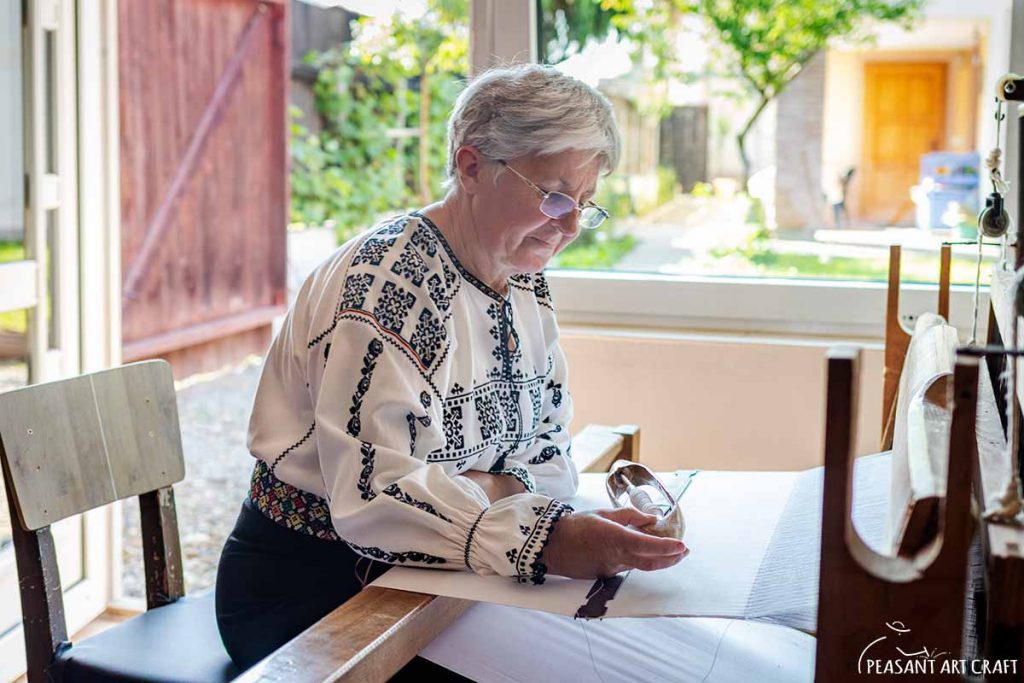
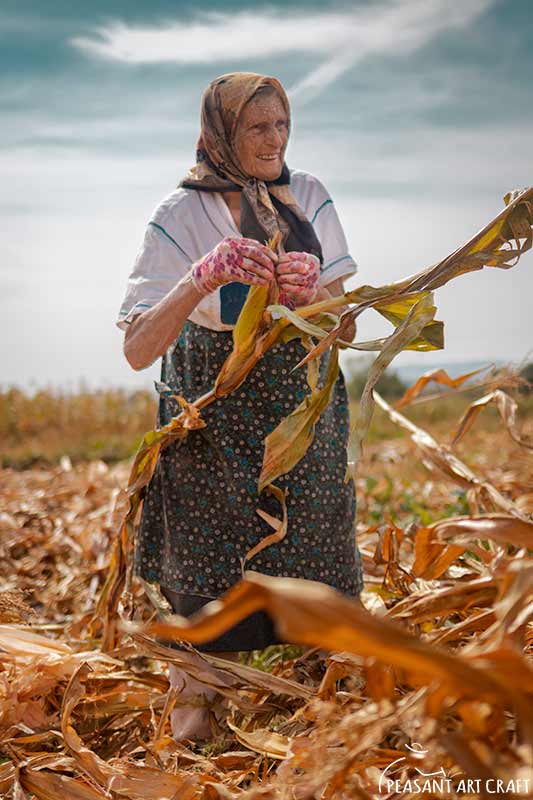
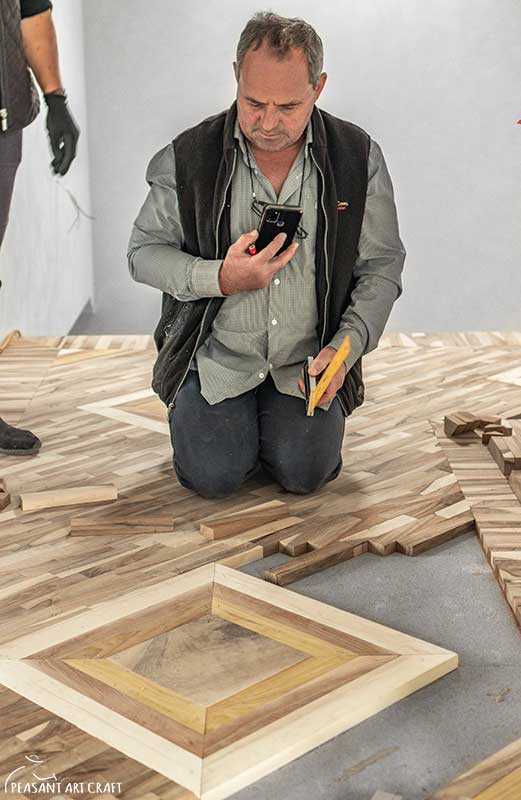
Leave a Comment